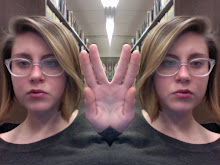The internet’s greatest contribution to the public imagination is the role it plays in creating an unregulated, user-defined space for entertainment consumption. “If I Can Dream”, the latest project from Simon Fuller, creator of “American Idol”, toys with this complex aspect of internet connectivity. The show follows the progress of five young hopefuls seeking fame (or notoriety) in L.A. Viewers can watch the cast members (two actors, a model, and a musician) in weekly half-hour installments that air on Hulu, or stream live footage from any camera in their Hollywood house twenty-four hours a day on the show’s site, ificandream.com. Questions to the cast can be posted via FaceBook, Twitter, or MySpace, some of which receive real-time responses. Additionally, anybody can upload their audition tapes on the show’s MySpace page with the chance to be voted the next housemate to take the place of the current cast members, who are expected to leave the experiment at any point that they receive a contract and “realize their dreams.”
If I Can Dream Press Book
“If I Can Dream” expands the key interactive component that made “Idol” a breakout reality television sensation: namely, the notion that it’s the viewer’s input, not only the viewer’s attention, that’s necessary to the entertainment product. “Dream” one ups “Idol” in dispelling with judges, and, in their place, seeks to unite an entire online community in one great experiment that brands itself as nothing less than the “democratization” of fame. In developing a peer-mediated platform for “Dream’s” structure, Fuller smartly applies the same practices that we are accustomed to using in social networking and YouTube. This association between social media and the role they play in broadcasting personal image as performance is highlighted in the use of these sites as audition spaces.
The platform of “Dream” may be ingenious; however, the final product is ultimately underwhelming. The show’s title is taken from an Elvis song, the lyrics of which are based upon the Martin Luther King Jr. speech, “I Have a Dream.” This subtext is sanitized in its attempt to provide a washed-out vision of the American Dream for five milquetoast white kids with chiseled features. Each cast member must make daily vlog entries that are ineloquent at best. Below is a vlog by aspiring musician Justin, who was briefly involved with Miley Cyrus.
Instead of acknowledging the tension between the show’s application of an egalitarian vision to the perils of fame and fortune, the editing focuses exclusively on the family-friendly relationships forged by the characters without any hint of drama looming on the horizon. One of the two blonde girls who want to be actresses, Amanda, contracts bronchitis and has to be left behind during the press conference tour that occupies the series’ first two episodes. The cast predictably states that things “just aren’t the same without Amanda.” Twenty-four hour surveillance is equally boring; each camera revealed eerily clean rooms that held no evidence of the five adults that live there.
Andy Forsell, the senior VP of programming at Hulu, notes that web series allow for the slower cultivation of an audience. This stance buys time for the show’s slow pace, demanding patience from viewers to give this experiment ample time to unfold. This comment also speaks to the dangerously simple equation made between banality and popular appeal, and the cautiousness of the series’ producers when handling a risky broadcast format. It is telling that the Associated Press article covering the series notes that “Dream’s” creators hope that it will “ascend” to television, and, by extension, engage a mass audience.
This approach completely ignores the nature of the entertainment products on the internet. Viewers not only select the shows they want, but encounter new ones based almost entirely upon their interests. In other words, the internet is a niche entertainment tool, not one particularly well-suited to a mass audience. According to television scholar Amanda Lotz, the internet is one of the major factors in the demise of a mass culture envisioned in the forties and fifties, in which everyone appeared to enjoy the same entertainment products.
Instead of allowing for the show to develop on its own terms in its digitized setting, the creators have chosen to employ the internet as promotional machinery. This does not bode well for the success of future series that choose to employ an internet-based platform for their shows; in privileging television broadcast over internet broadcast, networks and programmers alike are missing out on an invaluable opportunity to create engaging entertainment products.
However, what I find even more troubling about this purely promotional approach is that in ignoring the different breed of viewer engagement that the internet provides, companies are essentially staking claims on digital space that they haven’t bothered to understand. We’re moving closer and closer to an era where companies will buy up sites and charge for access the way that cable companies charge for access to television channels. “Dream” is one possible road that the internet can follow, one that mimics the tightly regulated flow of information in other formats.



No comments:
Post a Comment